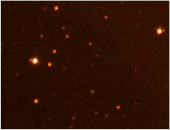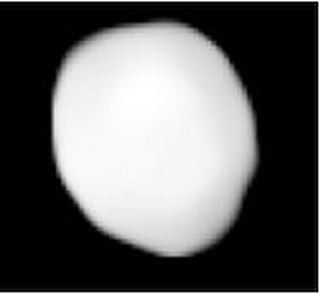
Europa is the 6th-largest asteroid in the asteroid belt, having a diameter of over 300 km, though it is not correspondingly massive. It is not round but is shaped like an ellipsoid of approximately 380×330×250 km. It was discovered on 4 February 1858, by Hermann Goldschmidt from his balcony in Paris. It is named after Europa, one of Zeus's conquests in Greek mythology, a name it shares with Jupiter's moon Europa.
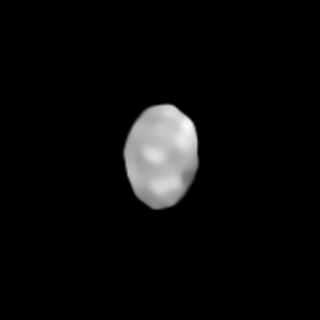
16 Psyche is a large M-type asteroid, which was discovered by the Italian astronomer Annibale de Gasparis, on 17 March 1852 and named after the Greek goddess Psyche. The prefix "16" signifies that it was the sixteenth minor planet in order of discovery. It is the largest and most massive of the M-type asteroids, and one of the dozen most massive asteroids. It has a mean diameter of approximately 220 kilometers (140 mi) and contains about one percent of the mass of the asteroid belt. It was thought to be the exposed core of a protoplanet, but recent observations cast doubt on that hypothesis. Psyche will be explored by NASA, with a spacecraft of the same name, marking the first time a manmade object will journey to a metallic asteroid, launched on 13 October 2023, with an expected arrival in 2029.

Astraea is an asteroid in the asteroid belt. Its surface is highly reflective and its composition is probably a mixture of nickel–iron with silicates of magnesium and iron. It is an S-type asteroid in the Tholen classification system.
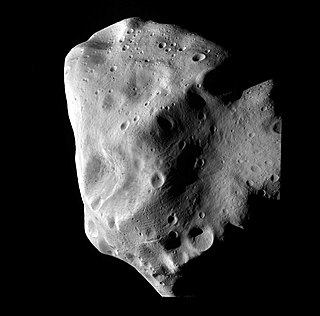
M-type asteroids are a spectral class of asteroids which appear to contain higher concentrations of metal phases than other asteroid classes, and are widely thought to be the source of iron meteorites.
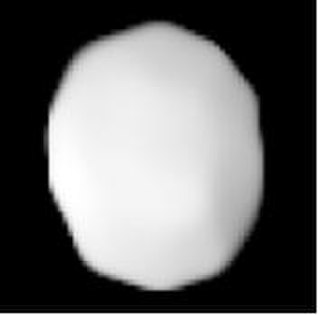
Davida is a large C-type asteroid. It is one of the largest asteroids; approximately tied for 7th place, to within measurement uncertainties, and the 5th or 6th most massive. It was discovered by R. S. Dugan in 1903. Davida is named after David Peck Todd, an astronomy professor at Amherst College.
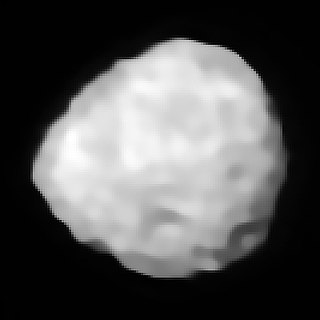
Iris is a large main-belt asteroid and possible remnant planetesimal orbiting the Sun between Mars and Jupiter. It is the fourth-brightest object in the asteroid belt. 7 Iris is classified as an S-type asteroid, meaning that it has a stony composition.

Hygiea is a major asteroid located in the main asteroid belt. With a mean diameter of between 425 and 440 km and a mass estimated to be 3% of the total mass of the belt, it is the fourth-largest asteroid in the Solar System by both volume and mass, and is the largest of the C-type asteroids in classifications that use G type for 1 Ceres. It is very close to spherical, apparently because it had re-accreted after the disruptive impact that produced the large Hygiean family of asteroids.
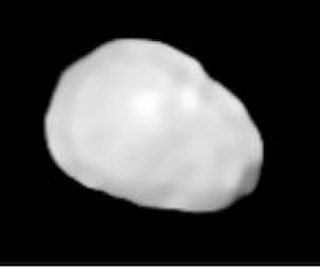
Eunomia is a very large asteroid in the middle asteroid belt. It is the largest of the stony (S-type) asteroids, with 3 Juno as a close second. It is quite a massive asteroid, in 6th to 8th place. It is the largest Eunomian asteroid, and is estimated to contain 1% of the mass of the asteroid belt.
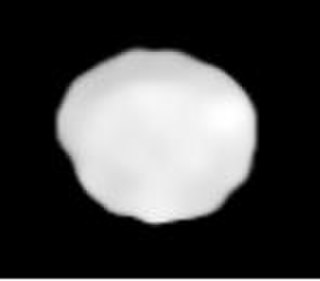
Fortuna is one of the largest main-belt asteroids. It has a composition similar to 1 Ceres: a darkly colored surface that is heavily space-weathered with the composition of primitive organic compounds, including tholins.
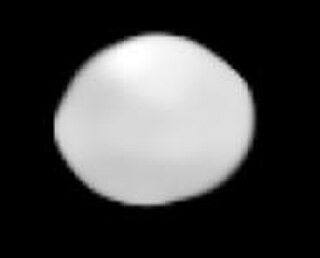
Euphrosyne is a very young asteroid. It is one of the largest asteroids. It was discovered by James Ferguson on September 1, 1854, the first asteroid found from North America. It is named after Euphrosyne, one of the Charites in Greek mythology. In 2019 a small companion was discovered. It is the third-roundest known asteroid ; this is thought to be due to having re-accreted after being disrupted by a collision, and it is not close to hydrostatic equilibrium.
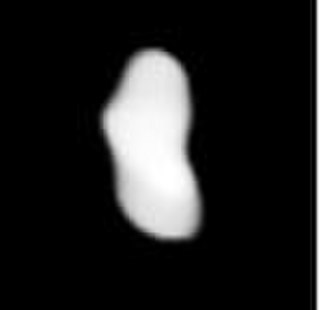
Ausonia is a stony Vestian asteroid from the inner region of the asteroid belt, approximately 100 kilometers in diameter. It was discovered by Italian astronomer Annibale de Gasparis on 10 February 1861, from the Astronomical Observatory of Capodimonte, in Naples, Italy. The initial choice of name for the asteroid was "Italia", after Italy, but this was modified to Ausonia, an ancient classical name for the Italian region.
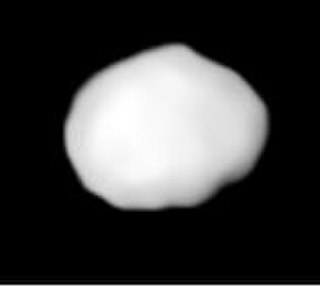
Thisbe, minor planet designation 88 Thisbe, is the 13th largest main-belt asteroid. It was discovered by C. H. F. Peters on June 15, 1866, and named after Thisbe, heroine of a Roman fable. This asteroid is orbiting the Sun at a distance of 2.768 AU with a period of 4.60 years and an orbital eccentricity (ovalness) of 0.165. The orbital plane is inclined at an angle of 5.219° to the ecliptic.
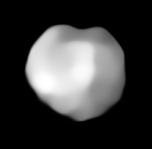
Julia is a large main-belt asteroid that was discovered by French astronomer Édouard Stephan on August 6, 1866. This was first of his two asteroid discoveries; the other was 91 Aegina. 89 Julia is believed to be named after Saint Julia of Corsica. A stellar occultation by Julia was observed on December 20, 1985.

Camilla is one of the largest asteroids from the outermost edge of the asteroid belt, approximately 250 kilometers in diameter. It is a member of the Sylvia family and located within the Cybele group. It was discovered on 17 November 1868, by English astronomer Norman Pogson at Madras Observatory, India, and named after Camilla, Queen of the Volsci in Roman mythology. The X-type asteroid is a rare trinary asteroid with two minor-planet moons discovered in 2001 and 2016, respectively. It is elongated in shape and has a short rotation period of 4.8 hours.
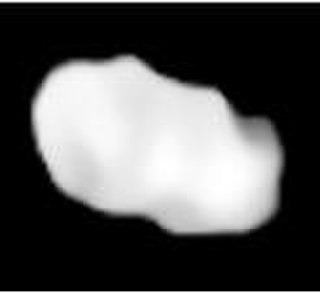
Elektra is a large outer main-belt asteroid and quadruple system with three minor-planet moons. It was discovered on 17 February 1873, by astronomer Christian Peters at Litchfield Observatory, New York, and named after Electra, an avenger in Greek mythology.
HD 28185 is a yellow dwarf star similar to the Sun located 128 light-years away from Earth in the constellation Eridanus. The designation HD 28185 refers to its entry in the Henry Draper catalogue. The star is known to possess one long-period extrasolar planet.
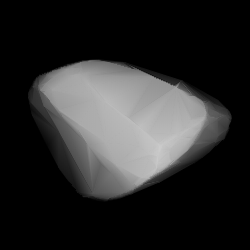
784 Pickeringia is a large background asteroid, approximately 76 kilometers in diameter, located in the outer region of the asteroid belt. It was discovered on 20 March 1914, by American astronomer Joel Hastings Metcalf at the Winchester Observatory in Massachusetts. The dark C-type asteroid has a rotation period of 13.1 hours and an irregular shape. It was named after American astronomers Edward Charles Pickering (1846–1919) and his brother William Henry Pickering (1858–1938).

